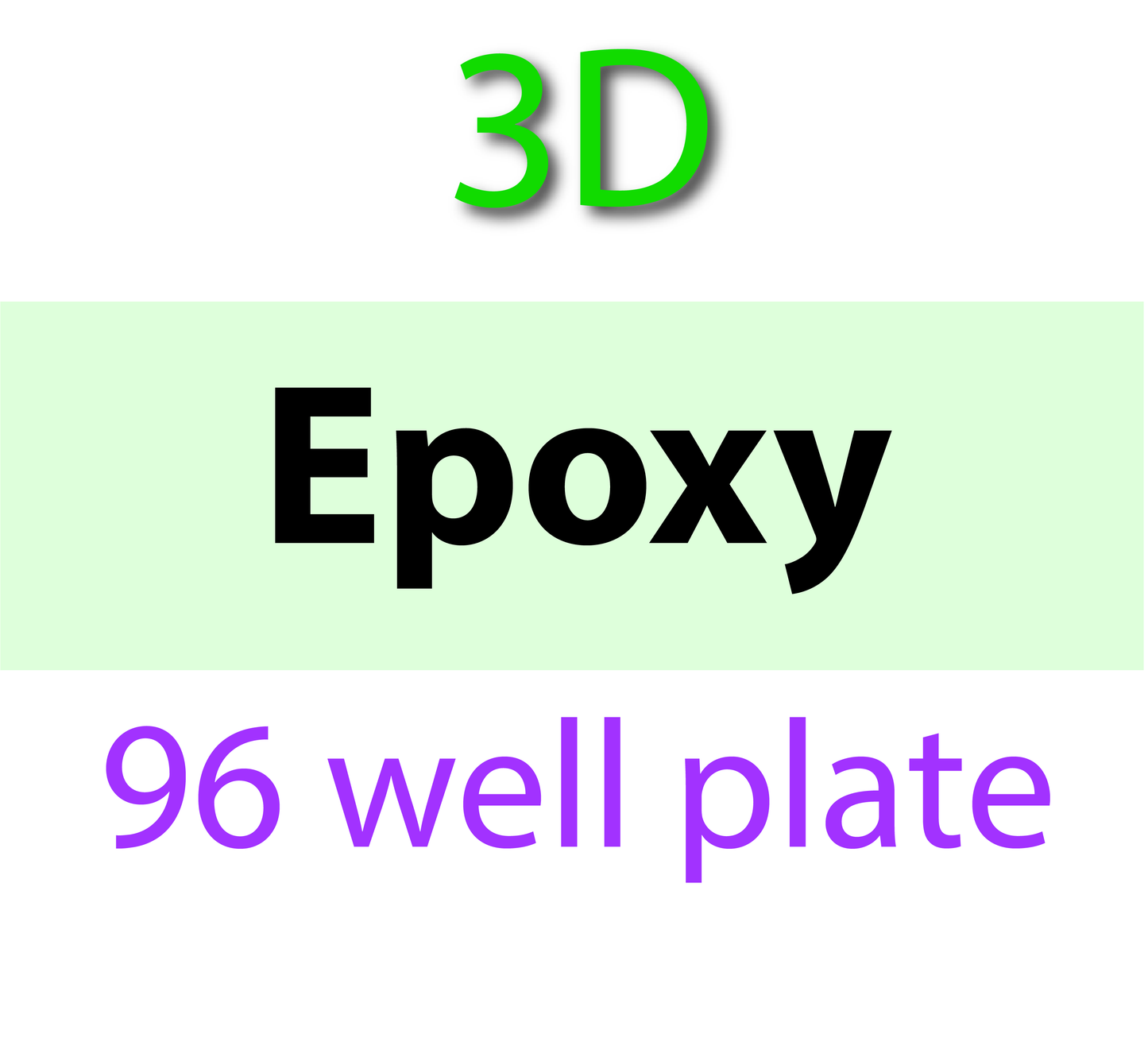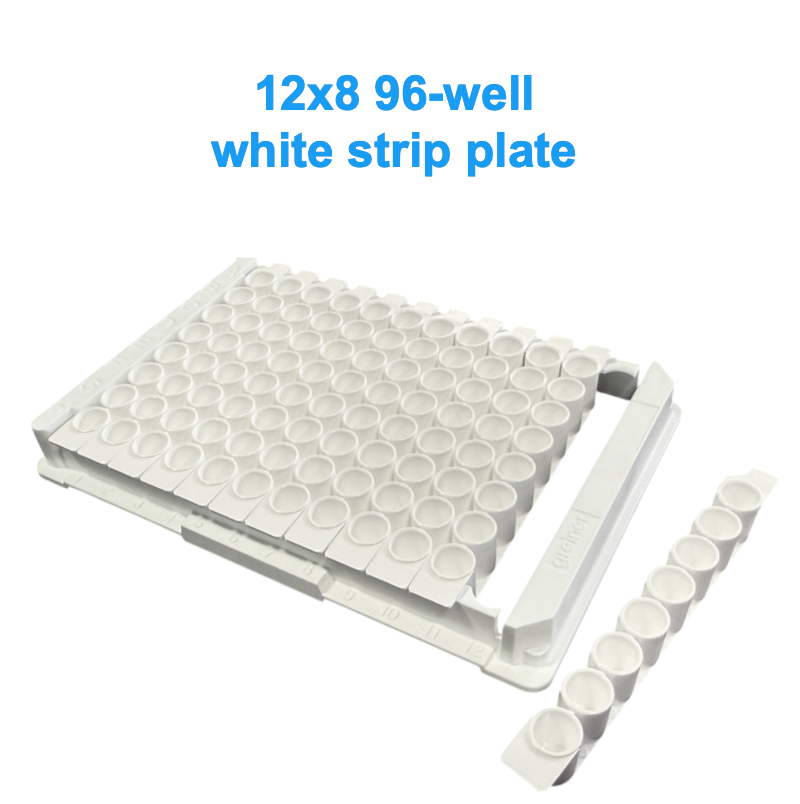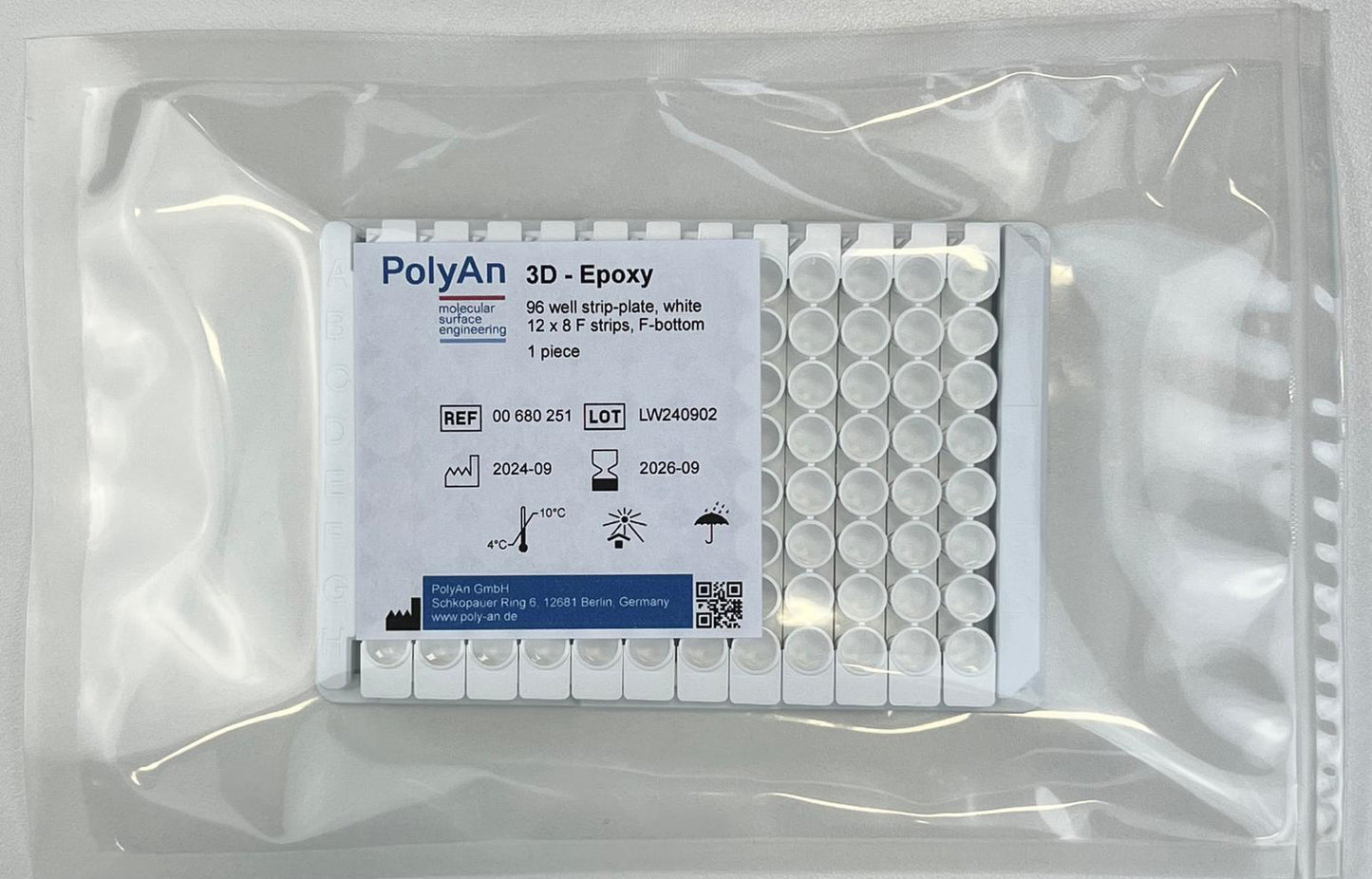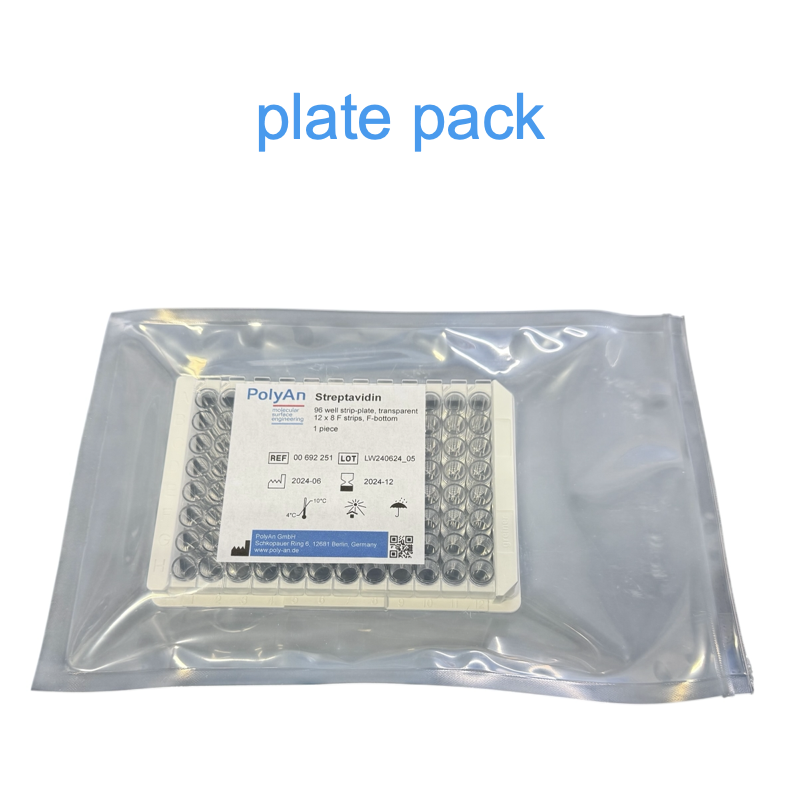PolyAn
00-680-251 PolyAn 3D-epoxy 96-well plate - 12x8 strips - white - flat bottom
00-680-251 PolyAn 3D-epoxy 96-well plate - 12x8 strips - white - flat bottom
Couldn't load pickup availability
3D-Epoxy 96-well plate - white, 12 x 8-strips, flat bottom. 4 Plates/Box.
The 3D-epoxy 96-well plates are manufactured from quality microtiter plates with high flatness bottom surface smoothness. The plate has low background fluorescence.
These plates are compatible with all microarray printers and most scanners / imagers. We recommend the axiREADER for both colorimetric and fluorometric array reading applications.
Surface Modification
PolyAn’s 3D-functionalised microarray surfaces are produced with a three-dimensional (3D)-surface chemistry comprised of a long-chain polymer containing a defined number of reactive groups. This polymer is covalently linked to the surface of the glass surface.
PolyAn 3D-epoxy surface's reactive groups consists of epoxides. The epoxides will covalently bind most biomolecules, including oligonucleotides, proteins, peptides and small molecules.
Epoxides are cyclic ethers with a highly strained three-member ring. Epoxy rings can be easily reacted with nucleophiles e.g. amines, hydrazines, thiols, hydroxides and carboxyl groups. Compared to NHS-esters or 1,4-Phenylene isothiocyates (PDITC) the epoxy surface is more stable and has a longer shelf-life.
3D-epoxy 96-well plates surfaces are stable up to temperatures of 40° C and are also more stable against humidity compared to NHS and PDITC-surfaces.
The nucleophilic addition is catalyzed by acid or basic conditions. Under acidic conditions, the oxygen in the ring is positively charged, which facilitates the nucleophilic attack. Under basic conditions the least substituted carbon is attacked by the applied nucleophile in a standard SN2 reaction.
Micotiter Plate format
This format allows you to take advantage of existing liquid handling and automation solutions for 96-well SBS formats. The plates are equipped with the same reactive surfaces as the glass and plastic slides. The twelve 8-well strips is a very convenient format. This enables assays to be performed on a partial plate, lowering the total assay cost.
Key features:
- Compatible with all liquid handling systems for ELISA
- Covalent binding of nucleophiles to the plate surface without complex coupling chemistry
- Integrated antifouling matrix reduces unspecific binding
- No cross-contamination between wells possible
- Most cost-efficient solution
Dimensions
overall skirt to top: 85 x 128 x 14 mm
Share








